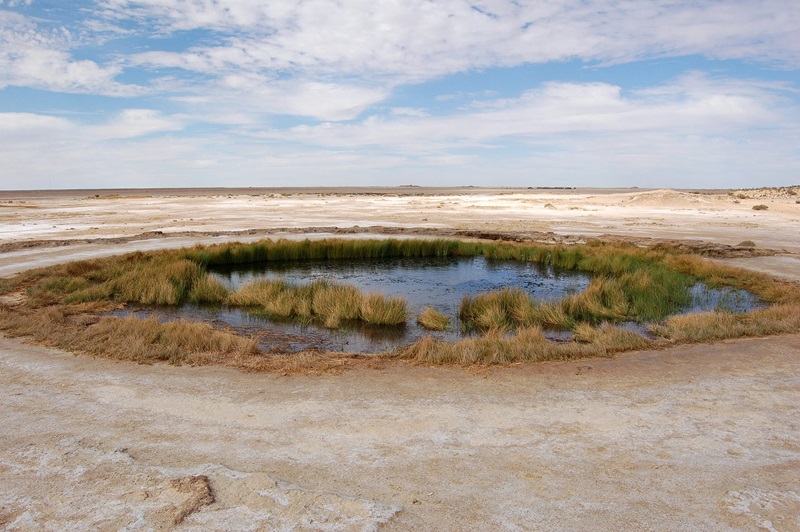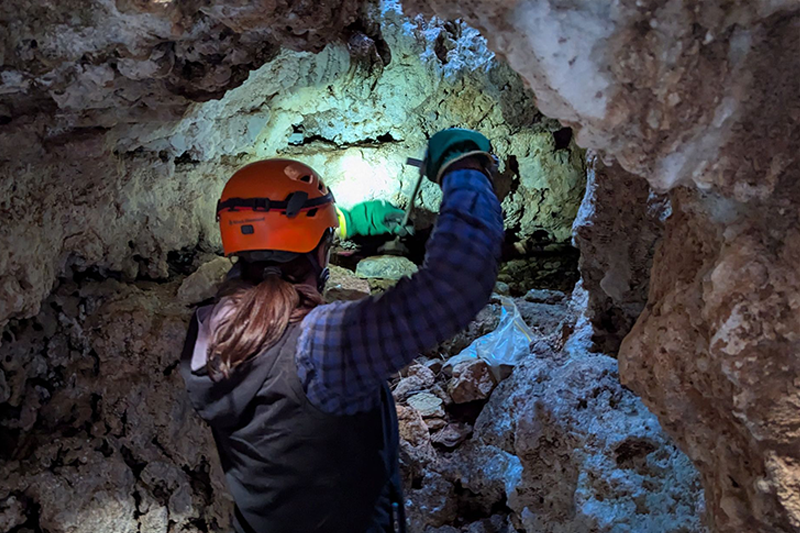Key points
- Water from beneath the ground supplies 30 per cent of Australia's water needs, providing a lifeline for communities, industries and environment.
- To ensure groundwater is used sustainably, scientists are using many lines of evidence to measure how quickly this resource is recharged.
- New, groundbreaking technologies offer faster, more precise ways to measure how much rain is making it into underground aquifers.
Beneath Australia's soils lie ancient aquifers which supply 30 per cent of the water consumed across the country. The groundwater they hold can be some of the oldest water on the planet, dating back as far as two million years.
This groundwater is a lifeline for residents, all the way from tiny remote communities to major cities such as Perth. It helps sustain major industries like agriculture and mining, and supports delicate ecosystems through times of drought.
Australia is the driest inhabited continent on Earth. As rainfall declines across swathes of southern Australia, it has never been more crucial to ensure a sustainable supply of groundwater long into the future.
Groundwater's mysteries run deep
For more than 50 years , CSIRO scientists have been finding ways to work out how much groundwater can be safely extracted, without endangering the ecosystems that rely on it for survival.
CSIRO is using powerful technologies to build a detailed picture of what aquifers look like – their geological make up, how much water they hold and how quickly they recharge after rainfall.

Principal Research Scientist Kate Holland is leading these efforts.
"We find groundwater at various depths, ranging from just below the surface, to hundreds or even thousands of metres underground," Kate said.
"Depending on the local geology, groundwater might be stored in sandy substrate – as we see in some floodplains," she said.
"It can run like an underground river through cavernous limestone aquifers. Or it can be found between tiny grains in sandstone, like in the Great Artesian Basin."
Using science to 'see' beneath the surface
To understand Australia's groundwater systems, scientists must devise clever ways to peer beneath the earth's surface. The technologies they use range from simple to highly sophisticated.
For example, Research Scientist Stacey Priestley placed over 100 sensors in caves, tunnels and mineshafts around Australia. These sensors – called hydrological loggers – count individual drips of water.

Stacey Priestley, installs a drip logger underground. The sensor's lid is like a microphone and it records whenever drips fall from the ceiling of the cave.
Dr Priestley is a Research Scientist within the Groundwater Systems team, within the Groundwater Management group in the Water Security program of CSIRO's Environment research unit.
Scientists use the information from the loggers together with geological, environmental and climatic data. This allows them to work out how much rain is needed over what time and area to recharge underground aquifers.
Another method involves building detailed models which can predict groundwater recharge at a particular location.
"These models do really complicated equations to work out how water and carbon move in soils right down to where groundwater is stored," Kate said.
"You input rainfall, take out the water which evaporates from topsoil and plants, and then the water that makes it through the soil profile becomes recharge," she said.
"We can use these models across hundreds of thousands of square kilometres, by translating them onto different geologies, soils and vegetation."
"That gives us a really big picture of recharge across vast areas of the continent," she said.
New research facility helps scientists dive deep into water chemistry
The latest technology to help scientists build a detailed picture of Australia's groundwater resources is the TRIFIN – short for TRItium Facility via INgrowth.
The TRIFIN is a precision tool – the only one of its kind in the Southern Hemisphere. It has the power to detect tritium, a radioactive isotope of hydrogen which is naturally present in rainwater.

Senior Research Scientist Dirk Mallants said groundwater can take years, decades, or even centuries to millennia to replenish. However, groundwater that contains tritium has its water refilled in a matter of years or decades.
"Our technology can detect tritium levels in groundwater to tell us how quickly it is being restored," Dirk said.
"This means groundwater extractions could be tailored to match the rate of replenishment to avoid overexploiting groundwater resources," he said.
"This would help manage water supplies, irrigation and more."
"TRIFIN can also identify water bores that are at risk of becoming dry over the next few decades due to a drying climate," he said.
What's more, the technology can also reveal whether aquifers risk becoming contaminated if there is pollution at the surface.
This valuable information will help authorities and industries manage their use of groundwater sustainably. It benefits communities too, by ensuring safe access to drinking water and informing how much water can be used during times of drought.
The major advantage of the TRIFIN technology is that it can analyse groundwater faster, with a higher degree of automation, using much smaller samples compared to conventional methods.
Safeguarding Australia's water security
Groundwater is essential to ensuring a safe and sustainable supply of water long into the future.With Australia's highly variable surface-water supply and decreasing rainfall across large parts of the continent, groundwater resources are increasingly becoming a lifeline for many communities, industries and environments.
Pressure on the resource is growing, too, as a result of a warmer – and in some places, drier – climate, as well as expanding agricultural industries, mining and gas extractions, and urban development.
"From bore holes for drinking water, to deep pits for mining, and natural springs and ecosystems that are precious to communities – it's all connected by groundwater," Kate said.
"Scientifically, it's really cool research, because you're using as many lines of evidence as you can to build the picture piece by piece," she said.
"Chemistry, geology, and complex modelling are all helping us see into the future, 50 to 100 years from now.
"The research we're doing today gives us a way of understanding risk, so that we can provide scientific advice with clear levels of confidence to the people who make decisions about water use."
By uncovering the secrets of water beneath the earth's surface, our researchers are helping to ensure sustainable use of this precious resource long into the future.






